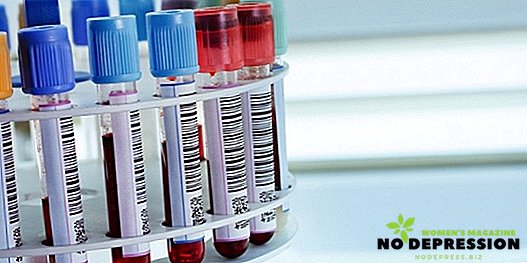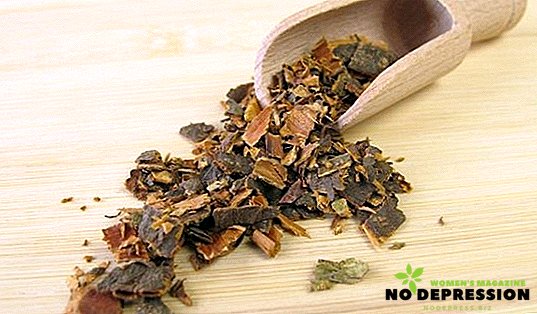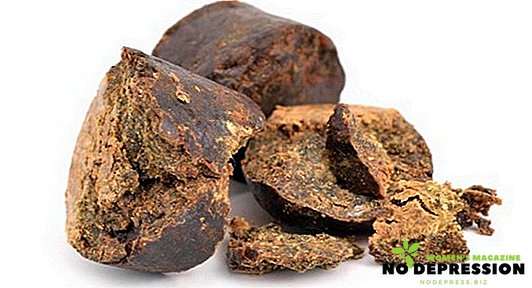Bilirubin is a yellow-green pigment, is formed from destroyed red blood cells (red blood cells), is a product of hemoglobin processing. This indicator shows the state of certain organs of the body.
The average is changing throughout life. The rate of pigment in a person of middle age to 4.6 µmol / l, but may vary slightly, this is an individual matter.

Raising or lowering its level speaks of diseases of certain organs. Pigment content tests can be taken at any hospital or clinic, if there are indications.
Violation of the amount of pigment, staining of the skin in yellow color indicates jaundice.
The formation of bilirubin in the blood, its types
Bilirubin is of three types (fractions):
- Indirect (unbound) is a newly formed, toxic form that can be processed by the liver. When it enters the healthy cells of the body, it disrupts their normal functioning. It does not dissolve in water;
- Direct (bound) - indirect bilirubin processed by the liver. To be eliminated from the body along with bile. Less toxic when released into tissue; soluble in water;
- General - shows the level of direct and indirect bilirubin.
After the breakdown of red blood cells, hemoglobin is processed by the bone marrow and spleen, it becomes indirect. Next, the liver converts indirect bilirubin to direct, and it is excreted in the urine and feces from the body.

What does the level of bilirubin in the body
The level of this pigment is directly dependent on the work of the liver, spleen and metabolic process of the organism as a whole. Its concentration may indicate certain diseases of these organs. To determine the exact diagnosis, you need to know which of the types of bilirubin to be tested.
The rate of total bilirubin in the blood of women
The level of bilirubin in the female body increases from birth to the 5th day of life. In the absence of pathologies and diseases, this indicator decreases with age, but only slightly.

Despite this, the rate indicator for each woman is individual. A deviation from the norm may be an increase or decrease in the level of pigment from the norm that you have fixed.
Table by age:
| Woman's age | The rate of total bilirubin (µmol / l) |
|---|---|
| 1st day after birth | No more than 35 |
| 2nd day after birth | 25 - 150 |
| 3rd - 5th day after birth | 25 - 205 |
| 6th day after birth - 40 years | 4 - 18 |
| 50 years - 90 years | 3 - 17 |
| More than 90 years | 3 - 15 |
The rate of direct bilirubin in women 20–60 years old is up to 4.6 µmol / l; indirect - up to 17.1 micromol / l. Normally, the amount of indirect bilirubin should exceed the amount of direct.
What is the norm of bilirubin in the blood of pregnant women?
During the carrying of the child should carefully monitor the level of this pigment. His deviations from the norm can signal a serious maternal illness that can harm the health or life of the child.
AT
With an increase in gestational age, the level of bilirubin may also increase, but only slightly. If its content is much higher than the norm, it can be an indicator of such diseases:
- anemia;
- hepatitis;
- cholestasis (stagnation of bile).

The last disease occurs in pregnant women, usually in the last trimester, often in winter. It is corrected by diet and medication prescribed by a doctor.
After the diagnosis has been established, treatment must begin immediately, otherwise the expectant mother and the child may suffer. If the treatment is successful, then the level of pigment after it will return to normal.
Blood test for bilirubin in women: indications, preparation, carrying
Tests for bilirubin shall be given for such indications:
- preventive examinations;
- hospital treatment;
- diagnostics of indicators in newborns;
- suspected cirrhosis of the liver, hepatitis;
- anemia;
- gallstone disease, cholecystitis, pancreatitis;
- suspected liver tumor;
- poisoning.
Often, after testing for this pigment, patients can see not quite accurate indicators. The reason for this is improper preparation for testing. Adults take an analysis on an empty stomach, or at least 7 hours after the last meal. Do not take caffeine, antibiotics, and drugs for the liver and kidneys the day before serving.

Blood is taken for analysis from a vein with a syringe and needle, or a catheter. The procedure is not very pleasant, but not very painful.
Relatively recently, medicine discovered the use of transcutaneous bilirubinometry (TBI) for patients. It does not imply penetration of needles or other mechanical damage under the skin.
It uses a device that measures the level of skin pigment in the area of the nose and forehead, on the chest. The device head is brought to the checked area and fixed for a few seconds to evaluate the result.
Then displays it on a digital display. Such a device can very accurately monitor the course of treatment and the course of the disease.

Reasons for the increase in bilirubin in the body
- Enhanced decomposition of red blood cells. The liver does not have time to process a large amount of indirect bilirubin, and it accumulates in the blood. In these processes, suprahepatic jaundice is observed. Such violations can provoke antibiotics, anti-inflammatory drugs, hereditary jaundice, anemia, infectious disease, toxic damage;
- Infectious inflammation of the liver. Hepatic jaundice is observed. Damaged liver cells do not process indirect bilirubin; both fractions are released into the blood;
- Stagnation in the bile passages. The passages are blocked due to inflammation, stones in the biliary tract, swelling, and edema. The permeability of bile vessels increases and direct bilirubin is released into the blood. There is mechanical jaundice;
- Lack of vitamin B12.

To lower the level of bilirubin in several ways:
- infusion therapy. Intravenous glucose, protein and drugs that reduce the level of toxins. This method of treatment is used for patients who are in serious condition;
- phototherapy. The patient is irradiated with lamps that contribute to the withdrawal of pigment by converting its indirect fraction into a straight line;
- normalization of the process of removing bile from the body with medical preparations, if the cause of the increased pigment level is the stagnation of bile;
- diet. Exclusion from the diet of sharp, salty, fried - to facilitate the work of the liver. Additionally, take means for removing toxins;
- from folk methods for treatment you can use decoctions or tea from chamomile, mint, St. John's wort, motherwort, decoction of birch leaf. Such decoctions have a choleretic effect, which will help to remove excess from the body.

Lower bilirubin value: causes and treatment
The decrease in the level of this pigment is observed less frequently than its increase. However, it can also indicate the presence of serious diseases.
Basically, diseases in which the level of pigment is less than the norm are associated with the loss of red blood cells from which bilirubin is derived. It can be such diseases:
- Renal failure;

- Leukemia, tuberculosis;
- Anemia.
If the level of pigment is reduced, it can be increased in such ways:
- engage in more physical activity and be in the fresh air;
- limit your diet from food that creates a load on the liver;
- give up alcohol and strong coffee.
Conclusion
- bilirubin is contained in the body of every person, without exception;
- after the breakdown of leukocytes, indirect bilirubin is toxic for the body. This is followed by its processing by the liver in a direct and non-toxic;
- its level indicates the state of the liver, kidneys, spleen, biliary tract;
- the normal level of pigment in the body is up to 4.6 µmol / l, but it can vary from the factors of age, the individual characteristics of the organism, pregnancy;
- Elevated bilirubin signals serious diseases of internal organs. Such as: anemia, infectious inflammations, congestion of bile passages, lack of vitamin B12;
- lower levels also speak of diseases such as: renal failure, leukemia, tuberculosis, anemia;
- You can pass tests for determining the amount of pigment in a hospital or clique, before you should carefully prepare.
Changes in the rate of pigment can be adjusted with medicines, revising the diet and lifestyle, abandoning junk food and destructive habits.
About decoding the blood test for bilirubin can be found in the following video.














